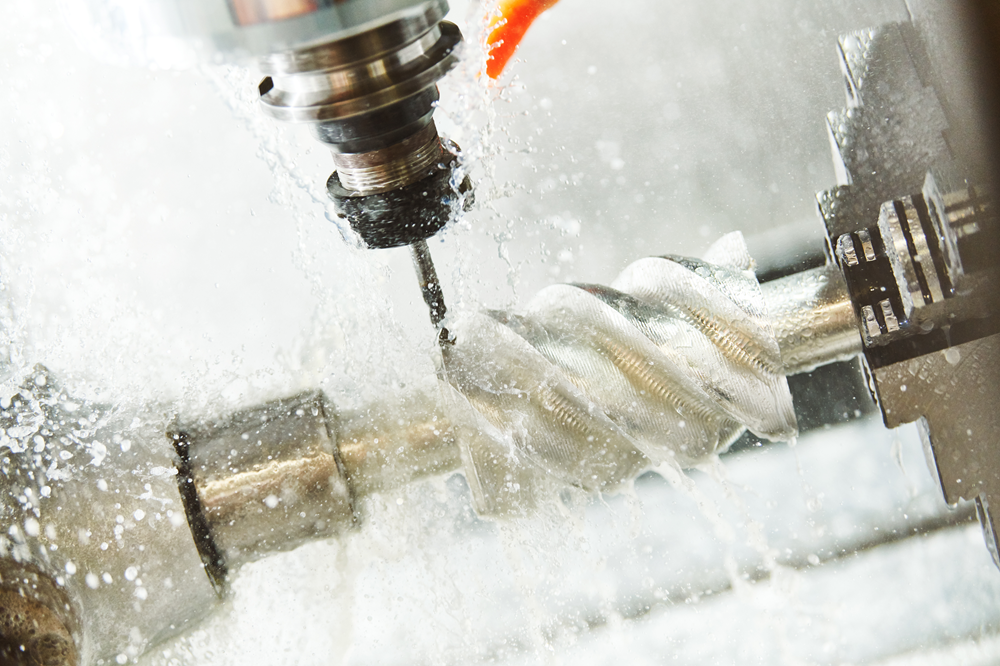Metalworking shops spend a lot of time optimizing the usual suspects: machinery, tooling, and throughput. Even training and upskilling have gotten a large boost in the last few years. But one factor often overlooked? Choosing and maintaining the right cutting fluid. The problem, though, with neglecting your fluid is that it can mean the difference between your shop running at 110% versus struggling to hit 50%.
The right cutting fluid is the secret weapon for shop health, which defines productivity, efficiency, and employee satisfaction in your metalworking shop. In 2025, managers and owners should spend time investigating how their cutting fluid affects the way their workshop runs (and whether there’s a better fluid out there that could improve it).
The Hidden Engine Behind Productivity
Cutting fluid might feel like a small piece of the puzzle, but it touches nearly every part of the production process. From preventing rust and maintaining optimal tool performance to safeguarding employee well-being, the right fluid helps keep your entire system running smoothly. It’s the foundation on which consistent part quality and repeatable outcomes rest — making it essential for productivity and profitability.
A Direct Line to Employee Satisfaction
Employee satisfaction is just as crucial as equipment uptime. Even the best-designed product can’t prevent all sensitivities — people have different skin types, allergies, and reactions. However, a well-managed fluid drastically reduces the chance of irritation.
For example, let’s say a team member notices an unexpected rash after working at a certain machine. The issue might be something in the fluid — or something else entirely. That’s why many leading metalworking fluid providers offer sample analysis through labs. They evaluate the fluid’s “health,” pinpointing bacteria levels and other critical indicators. In one instance, a machine operator discovered he was simply allergic to nickel in the material being machined, not the fluid itself. Identifying the cause enabled a quick fix, preserving both morale and safety.
Concentration Counts
An often-overlooked key to keeping cutting fluid in top shape is managing concentration. When fluids are mixed at the recommended ratios, they maintain bio-stability (keeping bacteria at bay), deliver proper rust protection, and keep equipment running efficiently.
Going too lean (not enough concentrate) can cause rusting or bacterial growth. Going too rich (too much concentrate) can lead to residues and, in some cases, skin irritations. Finding that sweet spot takes a bit of science and consistency — but it pays off in smoother production, fewer breakdowns, and a healthier workforce.
Planning for the Long Haul
Industry benchmarks often suggest a 12-month lifecycle for most cutting fluids, but the real figure can vary. Proper filtration, routine sampling, and good housekeeping can often stretch that timeline by several months — or more. That means fewer fluid changes, reduced waste hauling costs, and a smaller environmental footprint. In turn, shops see a direct impact on cost savings, sustainable operations, and the all-important uptime.
One approach that can help improve your fluid’s lifecycle is to schedule regular check-ins. At around the six-month mark, test the fluid in a lab to see if it’s still going strong. If it is, you can safely push toward a longer lifecycle — no need to dump and replace prematurely. That flexibility benefits both your budget and your team’s workload.
Service That Binds it All Together
The best cutting fluid providers aren’t just sales reps looking to ship a drum of concentrate. They serve as partners, offering hands-on education, troubleshooting support, and regular health checks. By sticking to service-first providers, shops can quickly see the difference in day-to-day operations: fewer unplanned downtime events, reduced waste, and a workforce that trusts the process.
Cutting fluid is more than just a consumable — it’s a strategic investment in shop health. Managing it with intention creates a ripple effect across the entire operation. The right product plus the right service strategy can turn a common chemical into the quiet hero of your manufacturing process, driving efficiency, protecting your team, and fortifying your bottom line all at once.
For more information on choosing (and successfully maintaining) the right cutting fluid, reach out to Master Fluid Solutions’ team of experts.

